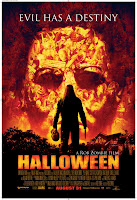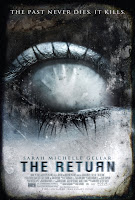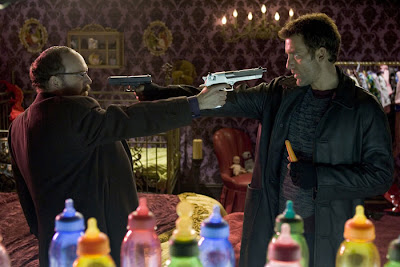Most of the day went wonderfully; but once we got home, Jack (the 6-year old) seemed to fall into a pattern of hitting his head on various objects about the house: the table, the wall, the floor, a toy truck in a chair, his brother. This meant I had to diffuse a crying situation about every ten minutes or so. Jude (the 2-year old) is at that age where it is his mission to get into and dump out everything he can climb to, reach for, and pull out. He has also been on a Mommy dependency binge of late and has not been taking her absence well.
The biggest scare of the evening came when I discovered the dog had been getting her anxiety out chewing on my satellite TV cable all afternoon. That had me speaking to her in the very way a slasher flick heroine might address the killer in the final moments of the film. Meanwhile, I was attempting the easiest dinner I could come up with for me and the boys: breakfast! The eggs seemed to be made of the most fragile of shells, which insisted on shattering into my fry pan every time I cracked one. I burned my fingers getting the shells out of the pan and burned the bacon, toast and eggs because I had to walk away from the stove so many times to pulls the boys off each other.
Finally, bedtime arrived and I was able to put them down… for a good night’s sleep, which they did rather easily. Then I could breathe a sigh of relief, recline in my easy chair, and push the play button on my remote for a chilling evening of horror films.
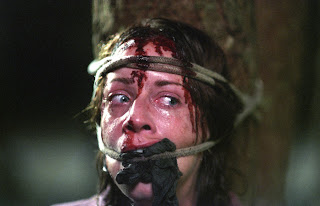 Severance (2007). One of my mistakes this week was identifying the British horror/comedy “Severance” as a zombie flick in my Horrorfest preview. There are no zombies in this movie. But I suppose that goes to show that I am not going into these movies with solid preconceptions. “Severance” is actually a slasher flick of sorts. It is made with that dark British humor that is becoming more popular here in the States through films like “Shaun of the Dead” and “Hot Fuzz”; done in earnest, but with macabre tongue-in-check awareness of the absurdity of our modern human existence.
Severance (2007). One of my mistakes this week was identifying the British horror/comedy “Severance” as a zombie flick in my Horrorfest preview. There are no zombies in this movie. But I suppose that goes to show that I am not going into these movies with solid preconceptions. “Severance” is actually a slasher flick of sorts. It is made with that dark British humor that is becoming more popular here in the States through films like “Shaun of the Dead” and “Hot Fuzz”; done in earnest, but with macabre tongue-in-check awareness of the absurdity of our modern human existence.The clever title refers to the victims of this terror plot, a group of business executives out on a wilderness getaway weekend of team training programs. “Paintball is about working together, so I don’t want to see any Rambos out there,” claims one of the team leaders. Is it a surprise to see one of the weekend warriors firing off twenty rounds of paint or so at a person he hasn’t even identified in the next scene?
The slasher techniques used here don’t really offer anything that hasn’t been seen before. It takes place in the wilderness, so someone is bound to end up in a bear trap (although the bear’s cameo near the beginning of the film is subtly humorous). But it is the quirky humor and the unforeseen plot developments that make this film wholly original.
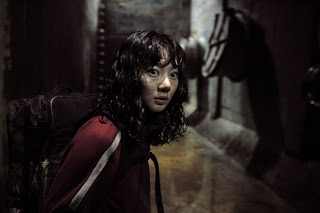 The Host (2007). The South Korean film “The Host” has been described by many critics as the best monster picture in years, and I am inclined to agree with that sentiment. Like any good monster flick, “The Host” isn’t really about the monster. In fact, the monster isn’t even perceived as the actual threat by many of the story’s players, but that is one of the film’s effective twists.
The Host (2007). The South Korean film “The Host” has been described by many critics as the best monster picture in years, and I am inclined to agree with that sentiment. Like any good monster flick, “The Host” isn’t really about the monster. In fact, the monster isn’t even perceived as the actual threat by many of the story’s players, but that is one of the film’s effective twists.While it would be easy to focus on the monster in the way a “Godzilla” film might, “The Host” is more interested in other aspects of its story. The monster is a wonderful creation, referred to in press material as a giant salamander. It looks more to me like a fusion of many different creatures found in the Han River that are mutated into one when a doctor orders gallons of toxic waste to be dumped into Seoul’s enormous sewer system.
I would, however, like to address the film’s attitude toward America. This film is a not-so-shocking but extremely harsh indictment of the United States and its current and past foreign policies. The Korean War is not a military campaign that often comes up as a black spot on U.S. history, but upon viewing this film, I wonder. The filmmakers seem to feel that U.S. policy in Korea has been just as much of a mistake as many have felt about our current war on terrorism. What does all that have to do with a giant salamander? Well, every mistake and mishap in this film is done under the orders of Americans. Even the initial chemical dump is done under the request of an American doctor, played by the great Scott Wilson.
But this all makes it sound like a political movie. Those are only the underpinnings. At the heart of this movie is a dysfunctional family that is willing to sacrifice everything for each other. “The Host” is an extraordinary example of the innovation and creativity that is driving one of the fastest growing and internationally popular film industries of our time.
 Stay Alive (2006). I committed another mistake during the writing of my Horrorfest preview when I left the 2006 video game-based “Stay Alive” off of my list of primer films. I’m sure the reason this happened is because “Stay Alive” is so utterly forgettable. It is an example of one of those cookie-cutter movies that gathers a bunch of good looking young actors to get knocked off one by one in a series of uninspired, PG-13 degree accidents that aren’t really accidents but the work of a very clever ghost; a ghost that would never have become one if she had been half as clever when she was alive.
Stay Alive (2006). I committed another mistake during the writing of my Horrorfest preview when I left the 2006 video game-based “Stay Alive” off of my list of primer films. I’m sure the reason this happened is because “Stay Alive” is so utterly forgettable. It is an example of one of those cookie-cutter movies that gathers a bunch of good looking young actors to get knocked off one by one in a series of uninspired, PG-13 degree accidents that aren’t really accidents but the work of a very clever ghost; a ghost that would never have become one if she had been half as clever when she was alive.“Stay Alive” contains one of those interesting premises that could have produced a good movie if that had been the intention of the filmmakers rather than trying to appeal to the broadest audience base. Some video game geeks start playing this new game and then start dropping dead in manners very similar to the deaths of their characters in the video game. Frankie Muniz( of “Malcolm in the Middle” fame) provides the only point of interest with his performance of a caricature of a video game geek. Unfortunately, his fate provides one of the most obvious twists of the plot. You would’ve had to completely miss a large section of the movie not to be able to predict it.
So “The Host” sets a high standard for the rest of this year’s Horrorfest to live up to. And, hopefully, I am done with mistakes and mishaps, like “Stay Alive”, for the rest of the month.
Here’s a scene from “The Host”. Notice the activity in the background in the shot with the woman wearing headphones and you’ll see how the horror and humor collaborate in this film.
Buy it: The Host
